This is “Writing a Research Paper”, chapter 12 from the book Successful Writing (v. 1.0). For details on it (including licensing), click here.
For more information on the source of this book, or why it is available for free, please see the project's home page. You can browse or download additional books there. To download a .zip file containing this book to use offline, simply click here.
Chapter 12 Writing a Research Paper
12.1 Creating a Rough Draft for a Research Paper
Learning Objectives
- Apply strategies for drafting an effective introduction and conclusion.
- Identify when and how to summarize, paraphrase, and directly quote information from research sources.
- Apply guidelines for citing sources within the body of the paper and the bibliography.
- Use primary and secondary research to support ideas.
- Identify the purposes for which writers use each type of research.
At last, you are ready to begin writing the rough draft of your research paper. Putting your thinking and research into words is exciting. It can also be challenging. In this section, you will learn strategies for handling the more challenging aspects of writing a research paper, such as integrating material from your sources, citing information correctly, and avoiding any misuse of your sources.
The Structure of a Research Paper
Research papers generally follow the same basic structure: an introduction that presents the writer’s thesis, a body section that develops the thesis with supporting points and evidence, and a conclusion that revisits the thesis and provides additional insights or suggestions for further research.
Your writing voice will come across most strongly in your introduction and conclusion, as you work to attract your readers’ interest and establish your thesis. These sections usually do not cite sources at length. They focus on the big picture, not specific details. In contrast, the body of your paper will cite sources extensively. As you present your ideas, you will support your points with details from your research.
Writing Your Introduction
There are several approaches to writing an introduction, each of which fulfills the same goals. The introduction should get readers’ attention, provide background information, and present the writer’s thesis. Many writers like to begin with one of the following catchy openers:
- A surprising fact
- A thought-provoking question
- An attention-getting quote
- A brief anecdote that illustrates a larger concept
- A connection between your topic and your readers’ experiences
The next few sentences place the opening in context by presenting background information. From there, the writer builds toward a thesis, which is traditionally placed at the end of the introduction. Think of your thesis as a signpost that lets readers know in what direction the paper is headed.
Jorge decided to begin his research paper by connecting his topic to readers’ daily experiences. Read the first draft of his introduction. The thesis is underlined. Note how Jorge progresses from the opening sentences to background information to his thesis.
Beyond the Hype: Evaluating Low-Carb Diets
I. Introduction
Over the past decade, increasing numbers of Americans have jumped on the low-carb bandwagon. Some studies estimate that approximately 40 million Americans, or about 20 percent of the population, are attempting to restrict their intake of food high in carbohydrates (Sanders and Katz, 2004; Hirsch, 2004). Proponents of low-carb diets say they are not only the most effective way to lose weight, but they also yield health benefits such as lower blood pressure and improved cholesterol levels. Meanwhile, some doctors claim that low-carb diets are overrated and caution that their long-term effects are unknown. Although following a low-carbohydrate diet can benefit some people, these diets are not necessarily the best option for everyone who wants to lose weight or improve their health.
Exercise 1
Write the introductory paragraph of your research paper. Try using one of the techniques listed in this section to write an engaging introduction. Be sure to include background information about the topic that leads to your thesis.
Tip
Writers often work out of sequence when writing a research paper. If you find yourself struggling to write an engaging introduction, you may wish to write the body of your paper first. Writing the body sections first will help you clarify your main points. Writing the introduction should then be easier. You may have a better sense of how to introduce the paper after you have drafted some or all of the body.
Writing Your Conclusion
In your introduction, you tell readers where they are headed. In your conclusion, you recap where they have been. For this reason, some writers prefer to write their conclusions soon after they have written their introduction. However, this method may not work for all writers. Other writers prefer to write their conclusion at the end of the paper, after writing the body paragraphs. No process is absolutely right or absolutely wrong; find the one that best suits you.
No matter when you compose the conclusion, it should sum up your main ideas and revisit your thesis. The conclusion should not simply echo the introduction or rely on bland summary statements, such as “In this paper, I have demonstrated that.…” In fact, avoid repeating your thesis verbatim from the introduction. Restate it in different words that reflect the new perspective gained through your research. That helps keep your ideas fresh for your readers. An effective writer might conclude a paper by asking a new question the research inspired, revisiting an anecdote presented earlier, or reminding readers of how the topic relates to their lives.
Writing at Work
If your job involves writing or reading scientific papers, it helps to understand how professional researchers use the structure described in this section. A scientific paper begins with an abstract that briefly summarizes the entire paper. The introduction explains the purpose of the research, briefly summarizes previous research, and presents the researchers’ hypothesis. The body provides details about the study, such as who participated in it, what the researchers measured, and what results they recorded. The conclusion presents the researchers’ interpretation of the data, or what they learned.
Using Source Material in Your Paper
One of the challenges of writing a research paper is successfully integrating your ideas with material from your sources. Your paper must explain what you think, or it will read like a disconnected string of facts and quotations. However, you also need to support your ideas with research, or they will seem insubstantial. How do you strike the right balance?
You have already taken a step in the right direction by writing your introduction. The introduction and conclusion function like the frame around a picture. They define and limit your topic and place your research in context.
In the body paragraphs of your paper, you will need to integrate ideas carefully at the paragraph level and at the sentence level. You will use topic sentences in your paragraphs to make sure readers understand the significance of any facts, details, or quotations you cite. You will also include sentences that transition between ideas from your research, either within a paragraph or between paragraphs. At the sentence level, you will need to think carefully about how you introduce paraphrased and quoted material.
Earlier you learned about summarizing, paraphrasing, and quoting when taking notes. In the next few sections, you will learn how to use these techniques in the body of your paper to weave in source material to support your ideas.
Summarizing Sources
When you summarizeTo concisely restate in one’s own words the main ideas from a source. material from a source, you zero in on the main points and restate them concisely in your own words. This technique is appropriate when only the major ideas are relevant to your paper or when you need to simplify complex information into a few key points for your readers.
Be sure to review the source material as you summarize it. Identify the main idea and restate it as concisely as you can—preferably in one sentence. Depending on your purpose, you may also add another sentence or two condensing any important details or examples. Check your summary to make sure it is accurate and complete.
In his draft, Jorge summarized research materials that presented scientists’ findings about low-carbohydrate diets. Read the following passage from a trade magazine article and Jorge’s summary of the article.
Assessing the Efficacy of Low-Carbohydrate Diets
Adrienne Howell, Ph.D.
Over the past few years, a number of clinical studies have explored whether high-protein, low-carbohydrate diets are more effective for weight loss than other frequently recommended diet plans, such as diets that drastically curtail fat intake (Pritikin) or that emphasize consuming lean meats, grains, vegetables, and a moderate amount of unsaturated fats (the Mediterranean diet). A 2009 study found that obese teenagers who followed a low-carbohydrate diet lost an average of 15.6 kilograms over a six-month period, whereas teenagers following a low-fat diet or a Mediterranean diet lost an average of 11.1 kilograms and 9.3 kilograms respectively. Two 2010 studies that measured weight loss for obese adults following these same three diet plans found similar results. Over three months, subjects on the low-carbohydrate diet plan lost anywhere from four to six kilograms more than subjects who followed other diet plans.
Summary
In three recent studies, researchers compared outcomes for obese subjects who followed either a low-carbohydrate diet, a low-fat diet, or a Mediterranean diet and found that subjects following a low-carbohydrate diet lost more weight in the same time (Howell, 2010).
Tip
A summary restates ideas in your own words—but for specialized or clinical terms, you may need to use terms that appear in the original source. For instance, Jorge used the term obese in his summary because related words such as heavy or overweight have a different clinical meaning.
Exercise 2
On a separate sheet of paper, practice summarizing by writing a one-sentence summary of the same passage that Jorge already summarized.
Paraphrasing Sources
When you paraphraseTo restate ideas or information from sources using one’s own words and sentence structures. material from a source, restate the information from an entire sentence or passage in your own words, using your own original sentence structure. A paraphrased source differs from a summarized source in that you focus on restating the ideas, not condensing them.
Again, it is important to check your paraphrase against the source material to make sure it is both accurate and original. Inexperienced writers sometimes use the thesaurus method of paraphrasing—that is, they simply rewrite the source material, replacing most of the words with synonyms. This constitutes a misuse of sources. A true paraphrase restates ideas using the writer’s own language and style.
In his draft, Jorge frequently paraphrased details from sources. At times, he needed to rewrite a sentence more than once to ensure he was paraphrasing ideas correctly. Read the passage from a website. Then read Jorge’s initial attempt at paraphrasing it, followed by the final version of his paraphrase.
Source
Dieters nearly always get great results soon after they begin following a low-carbohydrate diet, but these results tend to taper off after the first few months, particularly because many dieters find it difficult to follow a low-carbohydrate diet plan consistently.
Summary
People usually see encouraging outcomes shortly after they go on a low-carbohydrate diet, but their progress slows down after a short while, especially because most discover that it is a challenge to adhere to the diet strictly (Heinz, 2009).
After reviewing the paraphrased sentence, Jorge realized he was following the original source too closely. He did not want to quote the full passage verbatim, so he again attempted to restate the idea in his own style.
Summary
Because it is hard for dieters to stick to a low-carbohydrate eating plan, the initial success of these diets is short-lived (Heinz, 2009).
Exercise 3
On a separate sheet of paper, follow these steps to practice paraphrasing.
- Choose an important idea or detail from your notes.
- Without looking at the original source, restate the idea in your own words.
- Check your paraphrase against the original text in the source. Make sure both your language and your sentence structure are original.
- Revise your paraphrase if necessary.
Quoting Sources Directly
Most of the time, you will summarize or paraphrase source material instead of quoting directly. Doing so shows that you understand your research well enough to write about it confidently in your own words. However, direct quotes can be powerful when used sparingly and with purpose.
Quoting directly can sometimes help you make a point in a colorful way. If an author’s words are especially vivid, memorable, or well phrased, quoting them may help hold your reader’s interest. Direct quotations from an interviewee or an eyewitness may help you personalize an issue for readers. And when you analyze primary sources, such as a historical speech or a work of literature, quoting extensively is often necessary to illustrate your points. These are valid reasons to use quotations.
Less experienced writers, however, sometimes overuse direct quotations in a research paper because it seems easier than paraphrasing. At best, this reduces the effectiveness of the quotations. At worst, it results in a paper that seems haphazardly pasted together from outside sources. Use quotations sparingly for greater impact.
When you do choose to quote directly from a source, follow these guidelines:
- Make sure you have transcribed the original statement accurately.
- Represent the author’s ideas honestly. Quote enough of the original text to reflect the author’s point accurately.
- Never use a stand-alone quotation. Always integrate the quoted material into your own sentence.
- Use ellipses (…) if you need to omit a word or phrase. Use brackets [ ] if you need to replace a word or phrase.
- Make sure any omissions or changed words do not alter the meaning of the original text. Omit or replace words only when absolutely necessary to shorten the text or to make it grammatically correct within your sentence.
- Remember to include correctly formatted citations that follow the assigned style guide.
Jorge interviewed a dietician as part of his research, and he decided to quote her words in his paper. Read an excerpt from the interview and Jorge’s use of it, which follows.
Source
Personally, I don’t really buy into all of the hype about low-carbohydrate miracle diets like Atkins and so on. Sure, for some people, they are great, but for most, any sensible eating and exercise plan would work just as well.
Summary
Registered dietician Dana Kwon (2010) admits, “Personally, I don’t really buy into all of the hype.…Sure, for some people, [low-carbohydrate diets] are great, but for most, any sensible eating and exercise plan would work just as well.”
Notice how Jorge smoothly integrated the quoted material by starting the sentence with an introductory phrase. His use of ellipses and brackets did not change the source’s meaning.
Documenting Source Material
Throughout the writing process, be scrupulous about documenting information taken from sources. The purpose of doing so is twofold:
- To give credit to other writers or researchers for their ideas
- To allow your reader to follow up and learn more about the topic if desired
You will cite sources within the body of your paper and at the end of the paper in your bibliography. For this assignment, you will use the citation format used by the American Psychological Association (also known as APA style). For information on the format used by the Modern Language Association (MLA style), see Chapter 13 "APA and MLA Documentation and Formatting".
Citing Sources in the Body of Your Paper
In-text citationsInstances in which use of source material is documented in the body text of the research paper. In-text citations must have corresponding sources listed in the references section. document your sources within the body of your paper. These include two vital pieces of information: the author’s name and the year the source material was published. When quoting a print source, also include in the citation the page number where the quoted material originally appears. The page number will follow the year in the in-text citation. Page numbers are necessary only when content has been directly quoted, not when it has been summarized or paraphrased.
Within a paragraph, this information may appear as part of your introduction to the material or as a parenthetical citation at the end of a sentence. Read the examples that follow. For more information about in-text citations for other source types, see Chapter 13 "APA and MLA Documentation and Formatting".
Summary
Leibowitz (2008) found that low-carbohydrate diets often helped subjects with Type II diabetes maintain a healthy weight and control blood-sugar levels.
The introduction to the source material includes the author’s name followed by the year of publication in parentheses.
Summary
Low-carbohydrate diets often help subjects with Type II diabetes maintain a healthy weight and control blood-sugar levels (Leibowitz, 2008).
The parenthetical citation at the end of the sentence includes the author’s name, a comma, and the year the source was published. The period at the end of the sentence comes after the parentheses.
Creating a List of References
Each of the sources you cite in the body text will appear in a references listA list of sources used in a research paper that provides detailed bibliographical information. at the end of your paper. While in-text citations provide the most basic information about the source, your references section will include additional publication details. In general, you will include the following information:
- The author’s last name followed by his or her first (and sometimes middle) initial
- The year the source was published
- The source title
- For articles in periodicals, the full name of the periodical, along with the volume and issue number and the pages where the article appeared
Additional information may be included for different types of sources, such as online sources. For a detailed guide to APA or MLA citations, see Chapter 13 "APA and MLA Documentation and Formatting". A sample reference list is provided with the final draft of Jorge’s paper later in this chapter.
Using Primary and Secondary Research
As you write your draft, be mindful of how you are using primary and secondary source material to support your points. Recall that primary sources present firsthand information. Secondary sources are one step removed from primary sources. They present a writer’s analysis or interpretation of primary source materials. How you balance primary and secondary source material in your paper will depend on the topic and assignment.
Using Primary Sources Effectively
Some types of research papers must use primary sources extensively to achieve their purpose. Any paper that analyzes a primary text or presents the writer’s own experimental research falls in this category. Here are a few examples:
- A paper for a literature course analyzing several poems by Emily Dickinson
- A paper for a political science course comparing televised speeches delivered by two presidential candidates
- A paper for a communications course discussing gender biases in television commercials
- A paper for a business administration course that discusses the results of a survey the writer conducted with local businesses to gather information about their work-from-home and flextime policies
- A paper for an elementary education course that discusses the results of an experiment the writer conducted to compare the effectiveness of two different methods of mathematics instruction
For these types of papers, primary research is the main focus. If you are writing about a work (including nonprint works, such as a movie or a painting), it is crucial to gather information and ideas from the original work, rather than relying solely on others’ interpretations. And, of course, if you take the time to design and conduct your own field research, such as a survey, a series of interviews, or an experiment, you will want to discuss it in detail. For example, the interviews may provide interesting responses that you want to share with your reader.
Using Secondary Sources Effectively
For some assignments, it makes sense to rely more on secondary sources than primary sources. If you are not analyzing a text or conducting your own field research, you will need to use secondary sources extensively.
As much as possible, use secondary sources that are closely linked to primary research, such as a journal article presenting the results of the authors’ scientific study or a book that cites interviews and case studies. These sources are more reliable and add more value to your paper than sources that are further removed from primary research. For instance, a popular magazine article on junk-food addiction might be several steps removed from the original scientific study on which it is loosely based. As a result, the article may distort, sensationalize, or misinterpret the scientists’ findings.
Even if your paper is largely based on primary sources, you may use secondary sources to develop your ideas. For instance, an analysis of Alfred Hitchcock’s films would focus on the films themselves as a primary source, but might also cite commentary from critics. A paper that presents an original experiment would include some discussion of similar prior research in the field.
Jorge knew he did not have the time, resources, or experience needed to conduct original experimental research for his paper. Because he was relying on secondary sources to support his ideas, he made a point of citing sources that were not far removed from primary research.
Tip
Some sources could be considered primary or secondary sources, depending on the writer’s purpose for using them. For instance, if a writer’s purpose is to inform readers about how the No Child Left Behind legislation has affected elementary education, a Time magazine article on the subject would be a secondary source. However, suppose the writer’s purpose is to analyze how the news media has portrayed the effects of the No Child Left Behind legislation. In that case, articles about the legislation in news magazines like Time, Newsweek, and US News & World Report would be primary sources. They provide firsthand examples of the media coverage the writer is analyzing.
Avoiding Plagiarism
Your research paper presents your thinking about a topic, supported and developed by other people’s ideas and information. It is crucial to always distinguish between the two—as you conduct research, as you plan your paper, and as you write. Failure to do so can lead to plagiarism.
Intentional and Accidental Plagiarism
PlagiarismThe practice of using someone’s words or ideas without acknowledging the source. Plagiarism may be deliberate or may occur unintentionally through careless use of source material. is the act of misrepresenting someone else’s work as your own. Sometimes a writer plagiarizes work on purpose—for instance, by purchasing an essay from a website and submitting it as original course work. In other cases, a writer may commit accidental plagiarism due to carelessness, haste, or misunderstanding. To avoid unintentional plagiarism, follow these guidelines:
- Understand what types of information must be cited.
- Understand what constitutes fair use of a source.
- Keep source materials and notes carefully organized.
- Follow guidelines for summarizing, paraphrasing, and quoting sources.
When to Cite
Any idea or fact taken from an outside source must be cited, in both the body of your paper and the references list. The only exceptions are facts or general statements that are common knowledge. Common-knowledge facts or general statements are commonly supported by and found in multiple sources. For example, a writer would not need to cite the statement that most breads, pastas, and cereals are high in carbohydrates; this is well known and well documented. However, if a writer explained in detail the differences among the chemical structures of carbohydrates, proteins, and fats, a citation would be necessary. When in doubt, cite.
Fair Use
In recent years, issues related to the fair use of sources have been prevalent in popular culture. Recording artists, for example, may disagree about the extent to which one has the right to sample another’s music. For academic purposes, however, the guidelines for fair use are reasonably straightforward.
Writers may quote from or paraphrase material from previously published works without formally obtaining the copyright holder’s permission. Fair useA legitimate use of brief quotations from source material to support and develop a writer’s ideas. means that the writer legitimately uses brief excerpts from source material to support and develop his or her own ideas. For instance, a columnist may excerpt a few sentences from a novel when writing a book review. However, quoting or paraphrasing another’s work at excessive length, to the extent that large sections of the writing are unoriginal, is not fair use.
As he worked on his draft, Jorge was careful to cite his sources correctly and not to rely excessively on any one source. Occasionally, however, he caught himself quoting a source at great length. In those instances, he highlighted the paragraph in question so that he could go back to it later and revise. Read the example, along with Jorge’s revision.
Summary
Heinz (2009) found that “subjects in the low-carbohydrate group (30% carbohydrates; 40% protein, 30% fat) had a mean weight loss of 10 kg (22 lbs) over a 4-month period.” These results were “noticeably better than results for subjects on a low-fat diet (45% carbohydrates, 35% protein, 20% fat)” whose average weight loss was only “7 kg (15.4 lbs) in the same period.” From this, it can be concluded that “low-carbohydrate diets obtain more rapid results.” Other researchers agree that “at least in the short term, patients following low-carbohydrate diets enjoy greater success” than those who follow alternative plans (Johnson & Crowe, 2010).
After reviewing the paragraph, Jorge realized that he had drifted into unoriginal writing. Most of the paragraph was taken verbatim from a single article. Although Jorge had enclosed the material in quotation marks, he knew it was not an appropriate way to use the research in his paper.
Summary
Low-carbohydrate diets may indeed be superior to other diet plans for short-term weight loss. In a study comparing low-carbohydrate diets and low-fat diets, Heinz (2009) found that subjects who followed a low-carbohydrate plan (30% of total calories) for 4 months lost, on average, about 3 kilograms more than subjects who followed a low-fat diet for the same time. Heinz concluded that these plans yield quick results, an idea supported by a similar study conducted by Johnson and Crowe (2010). What remains to be seen, however, is whether this initial success can be sustained for longer periods.
As Jorge revised the paragraph, he realized he did not need to quote these sources directly. Instead, he paraphrased their most important findings. He also made sure to include a topic sentence stating the main idea of the paragraph and a concluding sentence that transitioned to the next major topic in his essay.
Working with Sources Carefully
Disorganization and carelessness sometimes lead to plagiarism. For instance, a writer may be unable to provide a complete, accurate citation if he didn’t record bibliographical information. A writer may cut and paste a passage from a website into her paper and later forget where the material came from. A writer who procrastinates may rush through a draft, which easily leads to sloppy paraphrasing and inaccurate quotations. Any of these actions can create the appearance of plagiarism and lead to negative consequences.
Carefully organizing your time and notes is the best guard against these forms of plagiarism. Maintain a detailed working bibliography and thorough notes throughout the research process. Check original sources again to clear up any uncertainties. Allow plenty of time for writing your draft so there is no temptation to cut corners.
Writing at Work
Citing other people’s work appropriately is just as important in the workplace as it is in school. If you need to consult outside sources to research a document you are creating, follow the general guidelines already discussed, as well as any industry-specific citation guidelines. For more extensive use of others’ work—for instance, requesting permission to link to another company’s website on your own corporate website—always follow your employer’s established procedures.
Academic Integrity
The concepts and strategies discussed in this section of Chapter 12 "Writing a Research Paper" connect to a larger issue—academic integrity. You maintain your integrity as a member of an academic community by representing your work and others’ work honestly and by using other people’s work only in legitimately accepted ways. It is a point of honor taken seriously in every academic discipline and career field.
Academic integrity violations have serious educational and professional consequences. Even when cheating and plagiarism go undetected, they still result in a student’s failure to learn necessary research and writing skills. Students who are found guilty of academic integrity violations face consequences ranging from a failing grade to expulsion from the university. Employees may be fired for plagiarism and do irreparable damage to their professional reputation. In short, it is never worth the risk.
Key Takeaways
- An effective research paper focuses on the writer’s ideas. The introduction and conclusion present and revisit the writer’s thesis. The body of the paper develops the thesis and related points with information from research.
- Ideas and information taken from outside sources must be cited in the body of the paper and in the references section.
- Material taken from sources should be used to develop the writer’s ideas. Summarizing and paraphrasing are usually most effective for this purpose.
- A summary concisely restates the main ideas of a source in the writer’s own words.
- A paraphrase restates ideas from a source using the writer’s own words and sentence structures.
- Direct quotations should be used sparingly. Ellipses and brackets must be used to indicate words that were omitted or changed for conciseness or grammatical correctness.
- Always represent material from outside sources accurately.
- Plagiarism has serious academic and professional consequences. To avoid accidental plagiarism, keep research materials organized, understand guidelines for fair use and appropriate citation of sources, and review the paper to make sure these guidelines are followed.
12.2 Developing a Final Draft of a Research Paper
Learning Objectives
- Revise your paper to improve organization and cohesion.
- Determine an appropriate style and tone for your paper.
- Revise to ensure that your tone is consistent.
- Edit your paper to ensure that language, citations, and formatting are correct.
Given all the time and effort you have put into your research project, you will want to make sure that your final draft represents your best work. This requires taking the time to revise and edit your paper carefully.
You may feel like you need a break from your paper before you revise and edit it. That is understandable—but leave yourself with enough time to complete this important stage of the writing process. In this section, you will learn the following specific strategies that are useful for revising and editing a research paper:
- How to evaluate and improve the overall organization and cohesion
- How to maintain an appropriate style and tone
- How to use checklists to identify and correct any errors in language, citations, and formatting
Revising Your Paper: Organization and Cohesion
When writing a research paper, it is easy to become overly focused on editorial details, such as the proper format for bibliographical entries. These details do matter. However, before you begin to address them, it is important to spend time reviewing and revising the content of the paper.
A good research paper is both organized and cohesive. OrganizationIn writing, a quality that describes the paper proceeding logically from the introduction to the body paragraphs to the conclusion. means that your argument flows logically from one point to the next. CohesionIn writing, a quality that describes the elements of a paper working together smoothly and naturally. means that the elements of your paper work together smoothly and naturally. In a cohesive research paper, information from research is seamlessly integrated with the writer’s ideas.
Revise to Improve Organization
When you revise to improve organization, you look at the flow of ideas throughout the essay as a whole and within individual paragraphs. You check to see that your essay moves logically from the introduction to the body paragraphs to the conclusion, and that each section reinforces your thesis. Use Checklist 12.1 to help you.
Checklist 12.1
Revision: Organization
At the essay level
- Does my introduction proceed clearly from the opening to the thesis?
- Does each body paragraph have a clear main idea that relates to the thesis?
- Do the main ideas in the body paragraphs flow in a logical order? Is each paragraph connected to the one before it?
- Do I need to add or revise topic sentences or transitions to make the overall flow of ideas clearer?
- Does my conclusion summarize my main ideas and revisit my thesis?
At the paragraph level
- Does the topic sentence clearly state the main idea?
- Do the details in the paragraph relate to the main idea?
- Do I need to recast any sentences or add transitions to improve the flow of sentences?
Jorge reread his draft paragraph by paragraph. As he read, he highlighted the main idea of each paragraph so he could see whether his ideas proceeded in a logical order. For the most part, the flow of ideas was clear. However, he did notice that one paragraph did not have a clear main idea. It interrupted the flow of the writing. During revision, Jorge added a topic sentence that clearly connected the paragraph to the one that had preceded it. He also added transitions to improve the flow of ideas from sentence to sentence.
Read the following paragraphs twice, the first time without Jorge’s changes, and the second time with them.
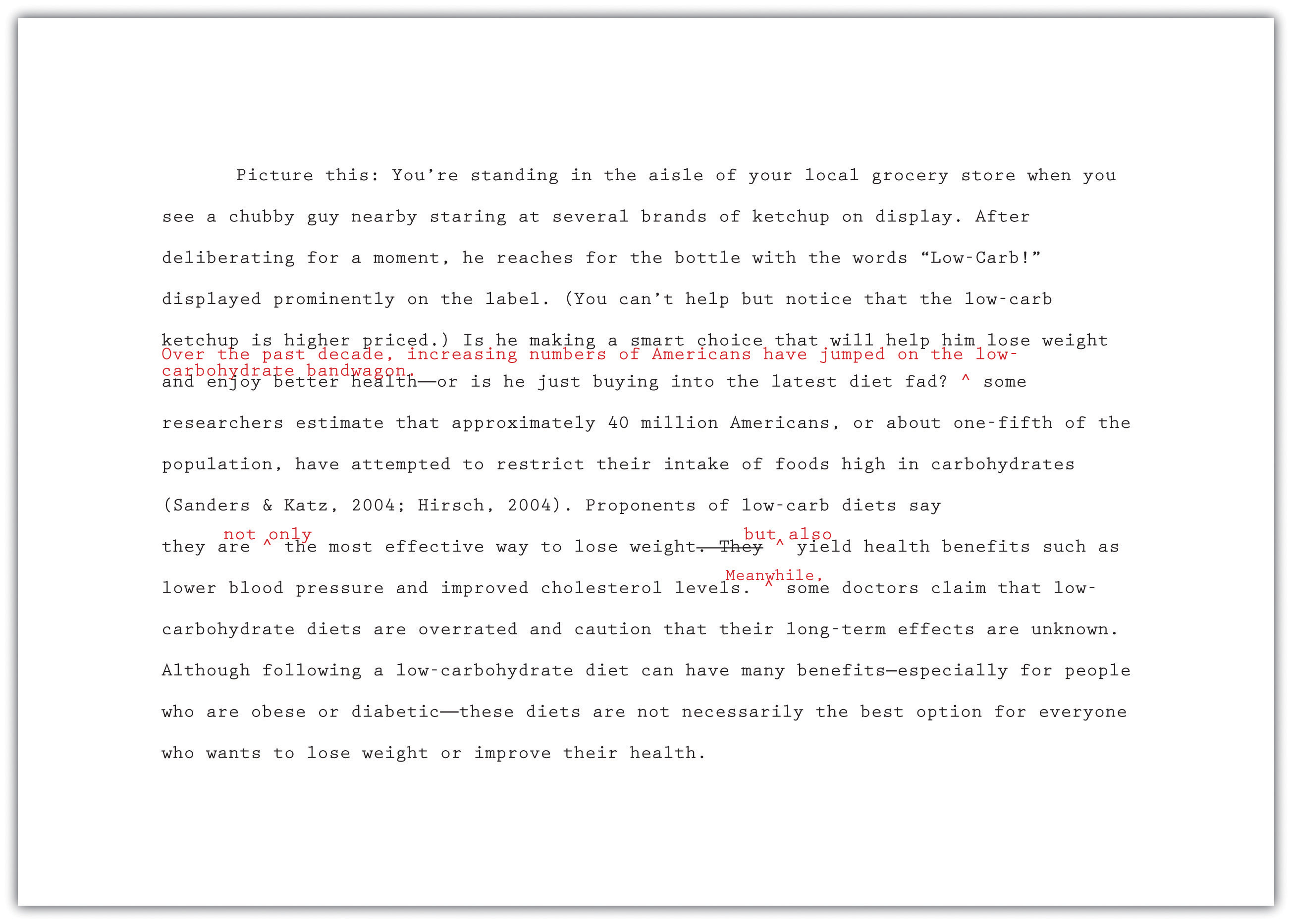
Exercise 1
Follow these steps to begin revising your paper’s overall organization.
- Print out a hard copy of your paper.
- Read your paper paragraph by paragraph. Highlight your thesis and the topic sentence of each paragraph.
- Using the thesis and topic sentences as starting points, outline the ideas you presented—just as you would do if you were outlining a chapter in a textbook. Do not look at the outline you created during prewriting. You may write in the margins of your draft or create a formal outline on a separate sheet of paper.
- Next, reread your paper more slowly, looking for how ideas flow from sentence to sentence. Identify places where adding a transition or recasting a sentence would make the ideas flow more logically.
- Review the topics on your outline. Is there a logical flow of ideas? Identify any places where you may need to reorganize ideas.
- Begin to revise your paper to improve organization. Start with any major issues, such as needing to move an entire paragraph. Then proceed to minor revisions, such as adding a transitional phrase or tweaking a topic sentence so it connects ideas more clearly.
Collaboration
Please share your paper with a classmate. Repeat the six steps and take notes on a separate piece of paper. Share and compare notes.
Tip
Writers choose transitions carefully to show the relationships between ideas—for instance, to make a comparison or elaborate on a point with examples. Make sure your transitions suit your purpose and avoid overusing the same ones. For an extensive list of transitions, see Chapter 8 "The Writing Process: How Do I Begin?", Section 8.4 "Revising and Editing".
Revise to Improve Cohesion
When you revise to improve cohesion, you analyze how the parts of your paper work together. You look for anything that seems awkward or out of place. Revision may involve deleting unnecessary material or rewriting parts of the paper so that the out-of-place material fits in smoothly.
In a research paper, problems with cohesion usually occur when a writer has trouble integrating source material. If facts or quotations have been awkwardly dropped into a paragraph, they distract or confuse the reader instead of working to support the writer’s point. Overusing paraphrased and quoted material has the same effect. Use Checklist 12.2 to review your essay for cohesion.
Checklist 12.2
Revision: Cohesion
- Does the opening of the paper clearly connect to the broader topic and thesis? Make sure entertaining quotes or anecdotes serve a purpose.
- Have I included support from research for each main point in the body of my paper?
- Have I included introductory material before any quotations? Quotations should never stand alone in a paragraph.
- Does paraphrased and quoted material clearly serve to develop my own points?
- Do I need to add to or revise parts of the paper to help the reader understand how certain information from a source is relevant?
- Are there any places where I have overused material from sources?
- Does my conclusion make sense based on the rest of the paper? Make sure any new questions or suggestions in the conclusion are clearly linked to earlier material.
As Jorge reread his draft, he looked to see how the different pieces fit together to prove his thesis. He realized that some of his supporting information needed to be integrated more carefully and decided to omit some details entirely. Read the following paragraph, first without Jorge’s revisions and then with them.
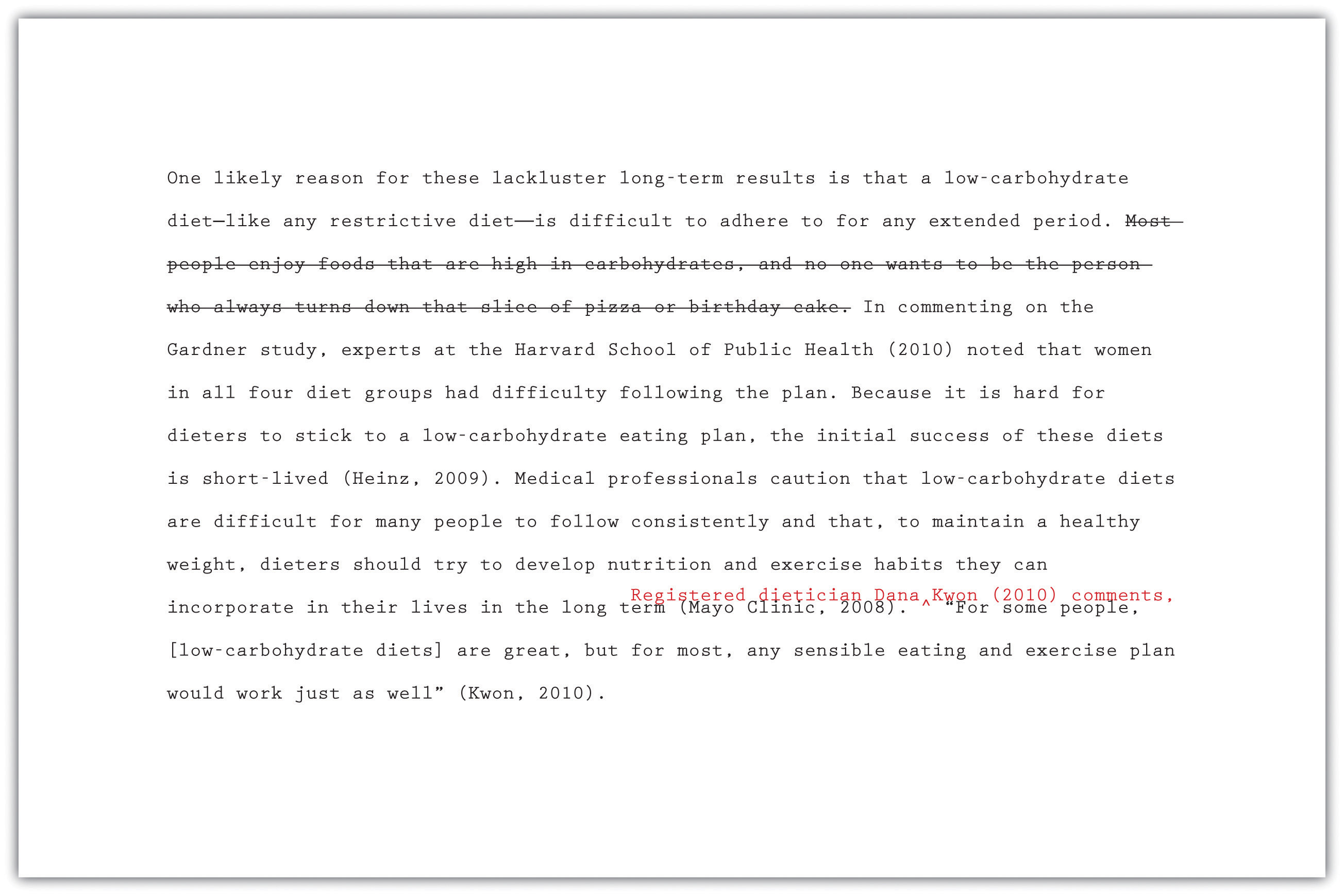
Jorge decided that his comment about pizza and birthday cake came across as subjective and was not necessary to make his point, so he deleted it. He also realized that the quotation at the end of the paragraph was awkward and ineffective. How would his readers know who Kwon was or why her opinion should be taken seriously? Adding an introductory phrase helped Jorge integrate this quotation smoothly and establish the credibility of his source.
Exercise 2
Follow these steps to begin revising your paper to improve cohesion.
- Print out a hard copy of your paper, or work with your printout from Note 12.33 "Exercise 1".
- Read the body paragraphs of your paper first. Each time you come to a place that cites information from sources, ask yourself what purpose this information serves. Check that it helps support a point and that it is clearly related to the other sentences in the paragraph.
- Identify unnecessary information from sources that you can delete.
- Identify places where you need to revise your writing so that readers understand the significance of the details cited from sources.
- Skim the body paragraphs once more, looking for any paragraphs that seem packed with citations. Review these paragraphs carefully for cohesion.
- Review your introduction and conclusion. Make sure the information presented works with ideas in the body of the paper.
- Revise the places you identified in your paper to improve cohesion.
Collaboration
Please exchange papers with a classmate. Complete step four. On a separate piece of paper, note any areas that would benefit from clarification. Return and compare notes.
Writing at Work
Understanding cohesion can also benefit you in the workplace, especially when you have to write and deliver a presentation. Speakers sometimes rely on cute graphics or funny quotations to hold their audience’s attention. If you choose to use these elements, make sure they work well with the substantive content of your presentation. For example, if you are asked to give a financial presentation, and the financial report shows that the company lost money, funny illustrations would not be relevant or appropriate for the presentation.
Using a Consistent Style and Tone
Once you are certain that the content of your paper fulfills your purpose, you can begin revising to improve styleThe unique way a writer uses language, which encompasses choices about sentence structure and word selection. and toneIn writing, the attitude a writer conveys toward the subject and the audience.. Together, your style and tone create the voice of your paper, or how you come across to readers. Style refers to the way you use language as a writer—the sentence structures you use and the word choices you make. Tone is the attitude toward your subject and audience that you convey through your word choice.
Determining an Appropriate Style and Tone
Although accepted writing styles will vary within different disciplines, the underlying goal is the same—to come across to your readers as a knowledgeable, authoritative guide. Writing about research is like being a tour guide who walks readers through a topic. A stuffy, overly formal tour guide can make readers feel put off or intimidated. Too much informality or humor can make readers wonder whether the tour guide really knows what he or she is talking about. Extreme or emotionally charged language comes across as unbalanced.
To help prevent being overly formal or informal, determine an appropriate style and tone at the beginning of the research process. Consider your topic and audience because these can help dictate style and tone. For example, a paper on new breakthroughs in cancer research should be more formal than a paper on ways to get a good night’s sleep.
A strong research paper comes across as straightforward, appropriately academic, and serious. It is generally best to avoid writing in the first person, as this can make your paper seem overly subjective and opinion based. Use Checklist 12.3 on style to review your paper for other issues that affect style and tone. You can check for consistency at the end of the writing process. Checking for consistency is discussed later in this section.
Checklist 12.3
Style
- My paper avoids excessive wordiness.
- My sentences are varied in length and structure.
- I have avoided using first-person pronouns such as I and we.
- I have used the active voice whenever possible.
- I have defined specialized terms that might be unfamiliar to readers.
- I have used clear, straightforward language whenever possible and avoided unnecessary jargon.
- My paper states my point of view using a balanced tone—neither too indecisive nor too forceful.
Word Choice
Note that word choice is an especially important aspect of style. In addition to checking the points noted on Checklist 12.3, review your paper to make sure your language is precise, conveys no unintended connotations, and is free of biases. Here are some of the points to check for:
- Vague or imprecise terms
- Slang
- Repetition of the same phrases (“Smith states…, Jones states…”) to introduce quoted and paraphrased material (For a full list of strong verbs to use with in-text citations, see Chapter 13 "APA and MLA Documentation and Formatting".)
- Exclusive use of masculine pronouns or awkward use of he or she
- Use of language with negative connotations, such as haughty or ridiculous
- Use of outdated or offensive terms to refer to specific ethnic, racial, or religious groups
Tip
Using plural nouns and pronouns or recasting a sentence can help you keep your language gender neutral while avoiding awkwardness. Consider the following examples.
- Gender-biased: When a writer cites a source in the body of his paper, he must list it on his references page.
- Awkward: When a writer cites a source in the body of his or her paper, he or she must list it on his or her references page.
- Improved: Writers must list any sources cited in the body of a paper on the references page.
Keeping Your Style Consistent
As you revise your paper, make sure your style is consistent throughout. Look for instances where a word, phrase, or sentence just does not seem to fit with the rest of the writing. It is best to reread for style after you have completed the other revisions so that you are not distracted by any larger content issues. Revising strategies you can use include the following:
- Read your paper aloud. Sometimes your ears catch inconsistencies that your eyes miss.
- Share your paper with another reader whom you trust to give you honest feedback. It is often difficult to evaluate one’s own style objectively—especially in the final phase of a challenging writing project. Another reader may be more likely to notice instances of wordiness, confusing language, or other issues that affect style and tone.
- Line-edit your paper slowly, sentence by sentence. You may even wish to use a sheet of paper to cover everything on the page except the paragraph you are editing—that forces you to read slowly and carefully. Mark any areas where you notice problems in style or tone, and then take time to rework those sections.
On reviewing his paper, Jorge found that he had generally used an appropriately academic style and tone. However, he noticed one glaring exception—his first paragraph. He realized there were places where his overly informal writing could come across as unserious or, worse, disparaging. Revising his word choice and omitting a humorous aside helped Jorge maintain a consistent tone. Read his revisions.
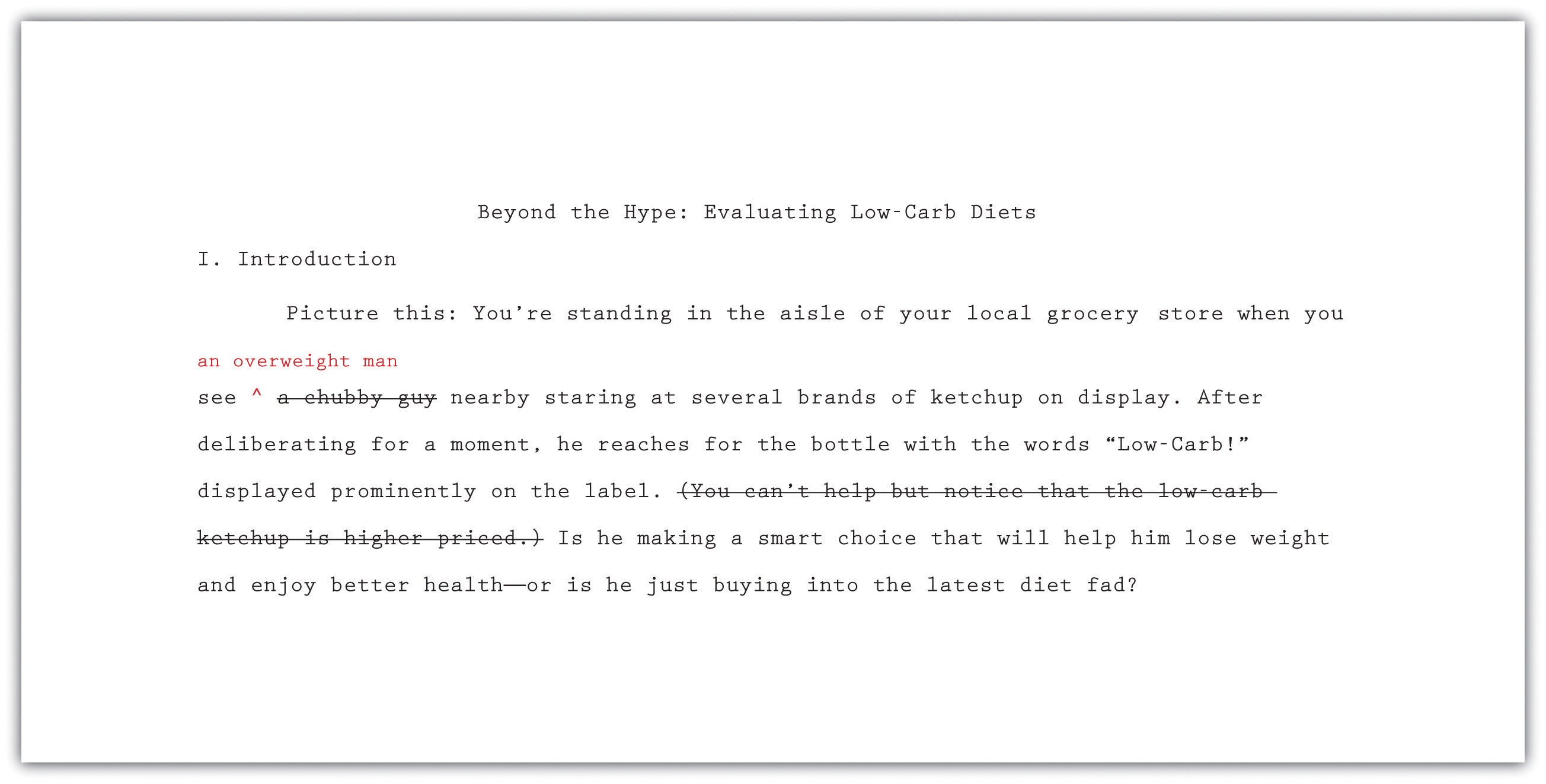
Exercise 3
Using Checklist 12.3, line-edit your paper. You may use either of these techniques:
- Print out a hard copy of your paper, or work with your printout from Note 12.33 "Exercise 1". Read it line by line. Check for the issues noted on Checklist 12.3, as well as any other aspects of your writing style you have previously identified as areas for improvement. Mark any areas where you notice problems in style or tone, and then take time to rework those sections.
- If you prefer to work with an electronic document, use the menu options in your word-processing program to enlarge the text to 150 or 200 percent of the original size. Make sure the type is large enough that you can focus on only one paragraph at a time. Read the paper line by line as described in step 1. Highlight any areas where you notice problems in style or tone, and then take time to rework those sections.
Collaboration
Please exchange papers with a classmate. On a separate piece of paper, note places where the essay does not seem to flow or you have questions about what was written. Return the essay and compare notes.
Editing Your Paper
After revising your paper to address problems in content or style, you will complete one final editorial review. Perhaps you already have caught and corrected minor mistakes during previous revisions. Nevertheless, give your draft a final edit to make sure it is error-free. Your final edit should focus on two broad areas:
- Errors in grammar, mechanics, usage, and spelling
- Errors in citing and formatting sources
For in-depth information on these two topics, see Chapter 2 "Writing Basics: What Makes a Good Sentence?" and Chapter 13 "APA and MLA Documentation and Formatting".
Correcting Errors
Given how much work you have put into your research paper, you will want to check for any errors that could distract or confuse your readers. Using the spell-checking feature in your word-processing program can be helpful—but this should not replace a full, careful review of your document. Be sure to check for any errors that may have come up frequently for you in the past. Use Checklist 12.4 to help you as you edit:
Checklist 12.4
Grammar, Mechanics, Punctuation, Usage, and Spelling
- My paper is free of grammatical errors, such as errors in subject-verb agreement and sentence fragments. (For additional guidance on grammar, see Chapter 2 "Writing Basics: What Makes a Good Sentence?".)
- My paper is free of errors in punctuation and mechanics, such as misplaced commas or incorrectly formatted source titles. (For additional guidance on punctuation and mechanics, see Chapter 3 "Punctuation".)
- My paper is free of common usage errors, such as alot and alright. (For additional guidance on correct usage, see Chapter 4 "Working with Words: Which Word Is Right?".)
- My paper is free of spelling errors. I have proofread my paper for spelling in addition to using the spell-checking feature in my word-processing program.
- I have checked my paper for any editing errors that I know I tend to make frequently.
Checking Citations and Formatting
When editing a research paper, it is also important to check that you have cited sources properly and formatted your document according to the specified guidelines. There are two reasons for this. First and foremost, citing sources correctly ensures that you have given proper credit to other people for ideas and information that helped you in your work. Second, using correct formatting establishes your paper as one student’s contribution to the work developed by and for a larger academic community. Increasingly, American Psychological Association (APA) style guidelines are the standard for many academic fields. Modern Language Association (MLA) is also a standard style in many fields. Use Checklist 12.5 to help you check citations and formatting.
Checklist 12.5
Citations and Formatting
- Within the body of my paper, each fact or idea taken from a source is credited to the correct source.
- Each in-text citation includes the source author’s name (or, where applicable, the organization name or source title) and year of publication. I have used the correct format of in-text and parenthetical citations.
- Each source cited in the body of my paper has a corresponding entry in the references section of my paper.
- My references section includes a heading and double-spaced, alphabetized entries.
- Each entry in my references section is indented on the second line and all subsequent lines.
- Each entry in my references section includes all the necessary information for that source type, in the correct sequence and format.
- My paper includes a title page.
- My paper includes a running head.
- The margins of my paper are set at one inch. Text is double spaced and set in a standard 12-point font.
For detailed guidelines on APA and MLA citation and formatting, see Chapter 13 "APA and MLA Documentation and Formatting".
Writing at Work
Following APA or MLA citation and formatting guidelines may require time and effort. However, it is good practice for learning how to follow accepted conventions in any professional field. Many large corporations create a style manual with guidelines for editing and formatting documents produced by that corporation. Employees follow the style manual when creating internal documents and documents for publication.
During the process of revising and editing, Jorge made changes in the content and style of his paper. He also gave the paper a final review to check for overall correctness and, particularly, correct APA or MLA citations and formatting. Read the final draft of his paper.
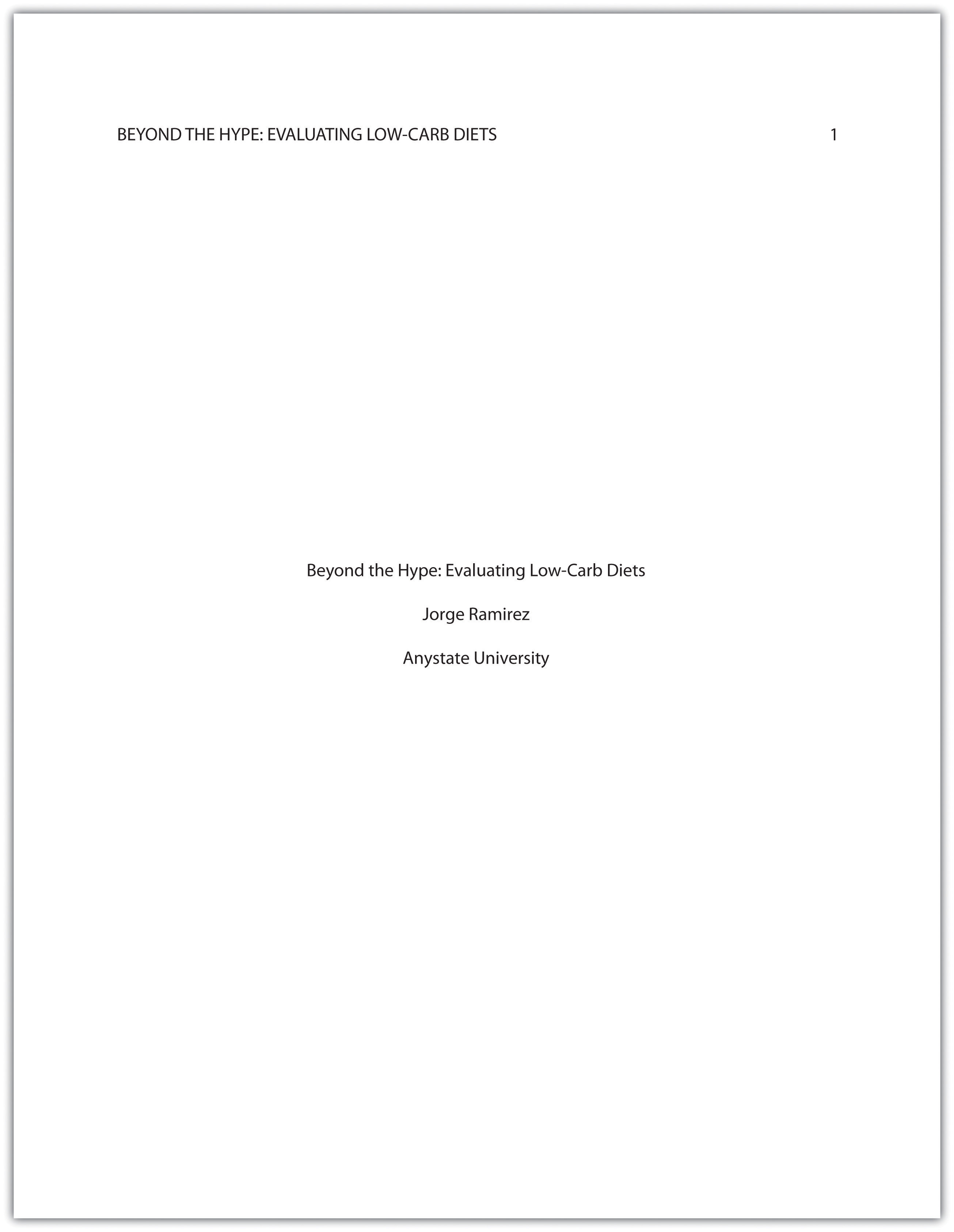
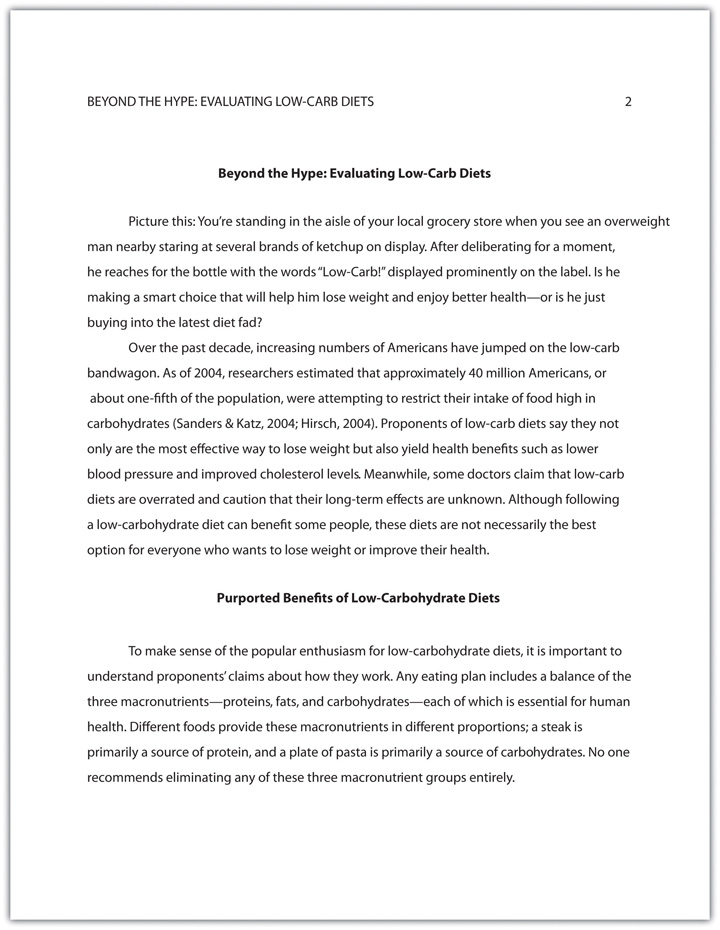
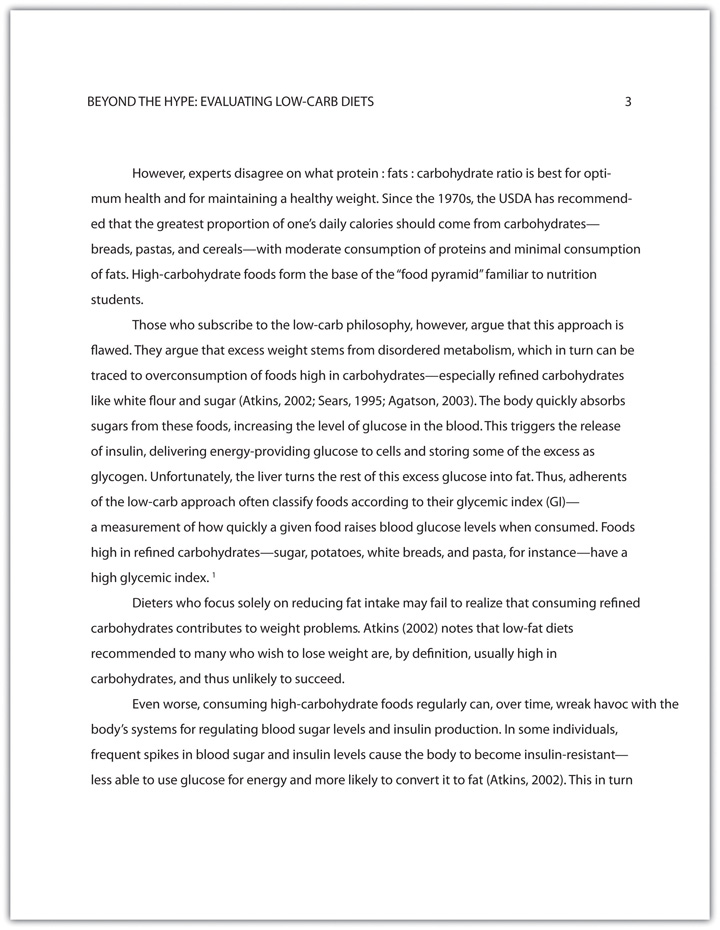
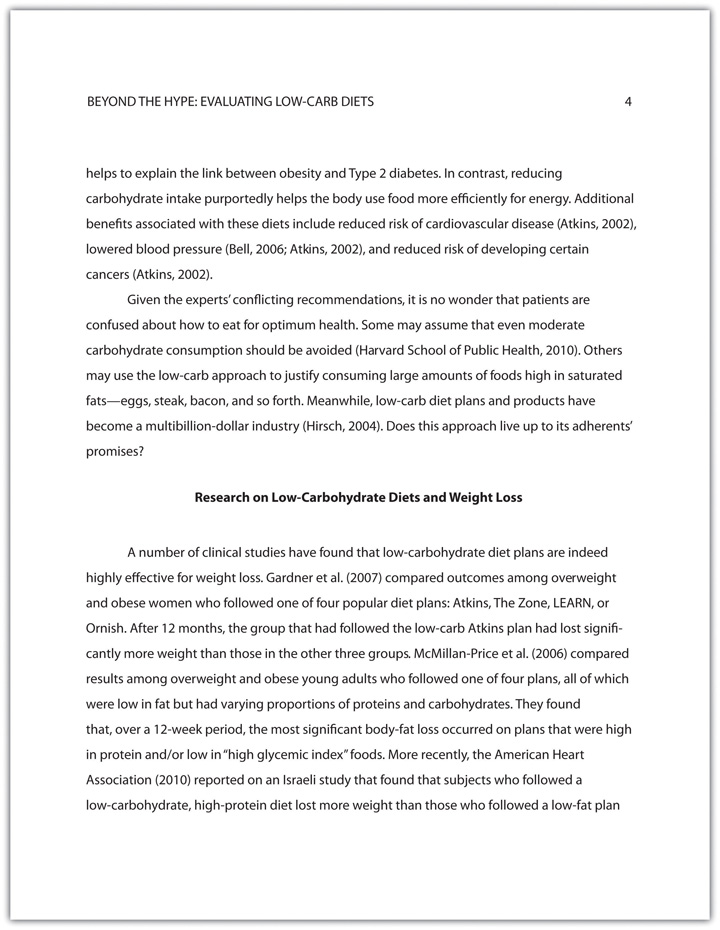
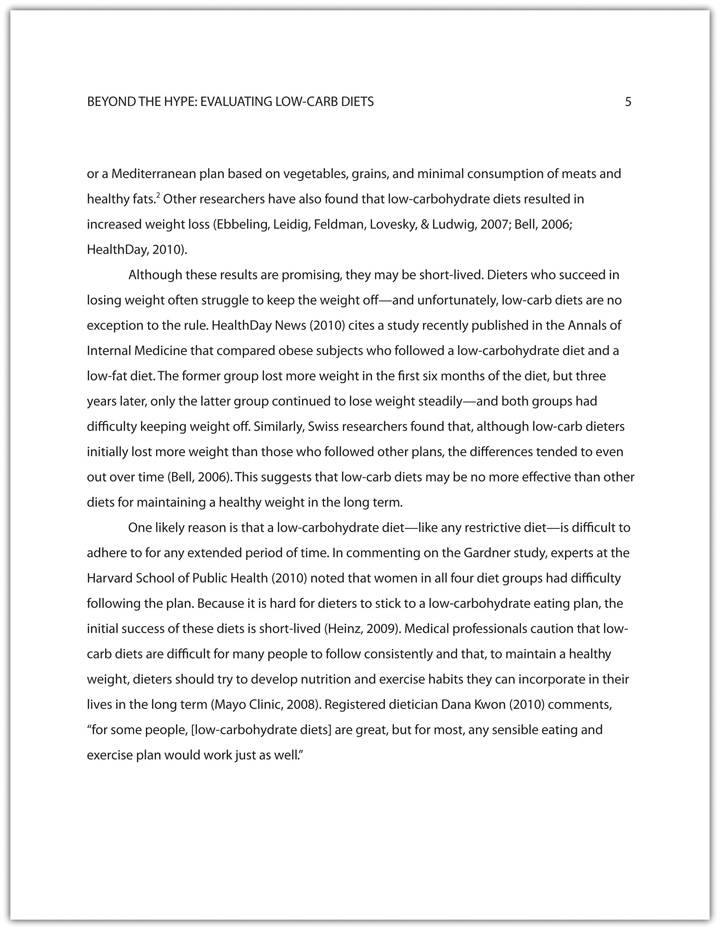
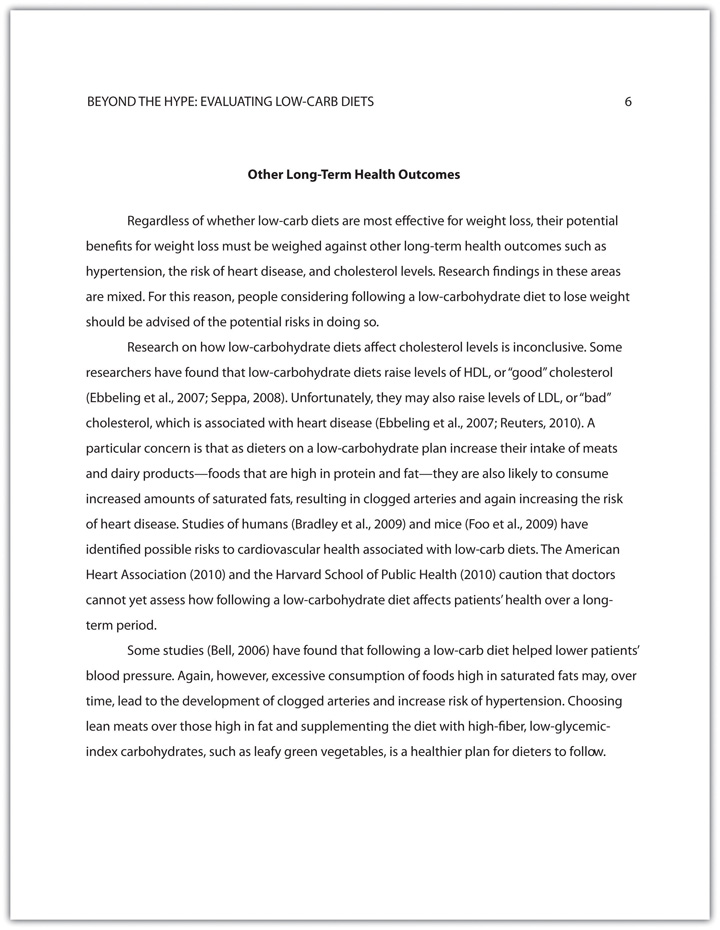
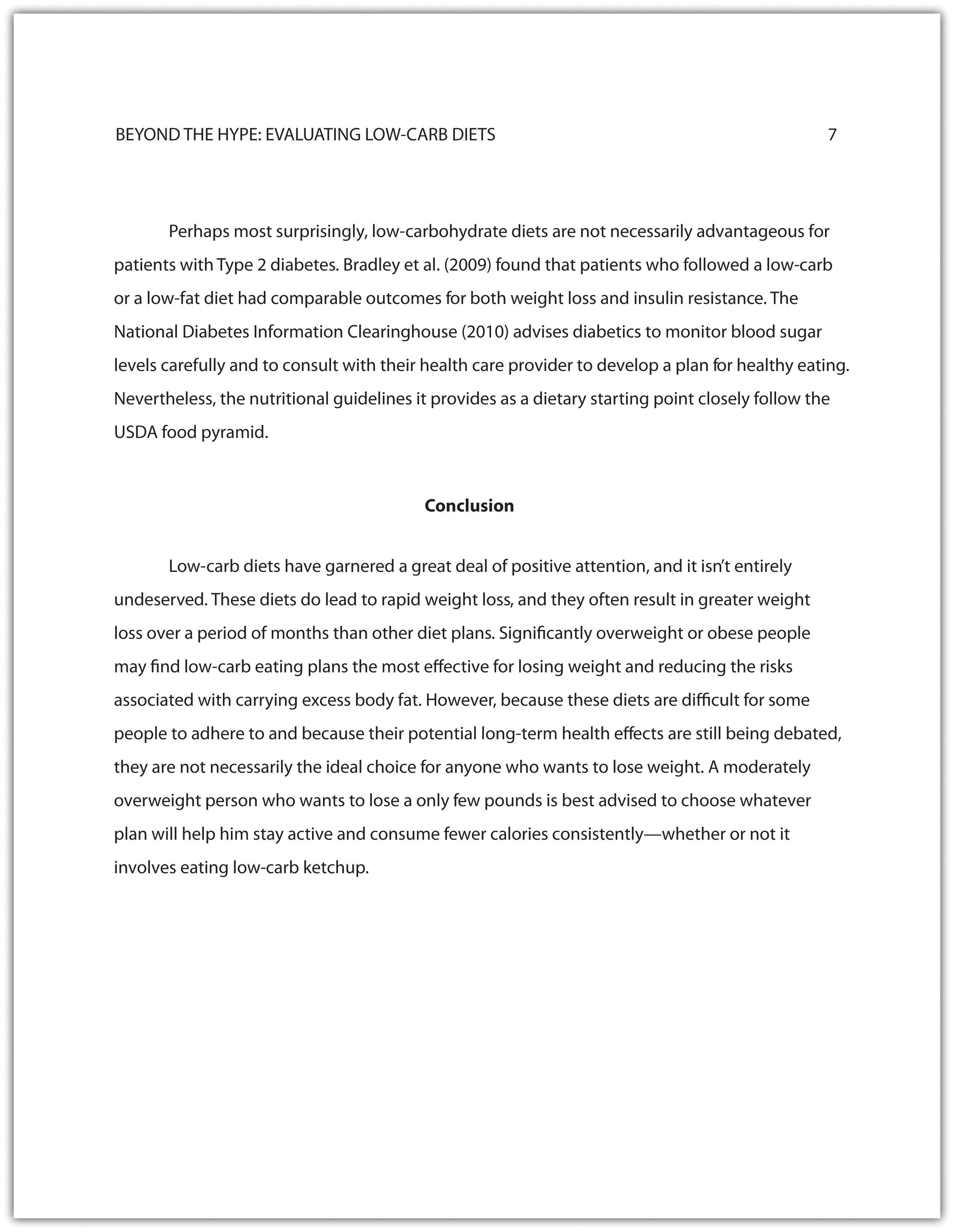
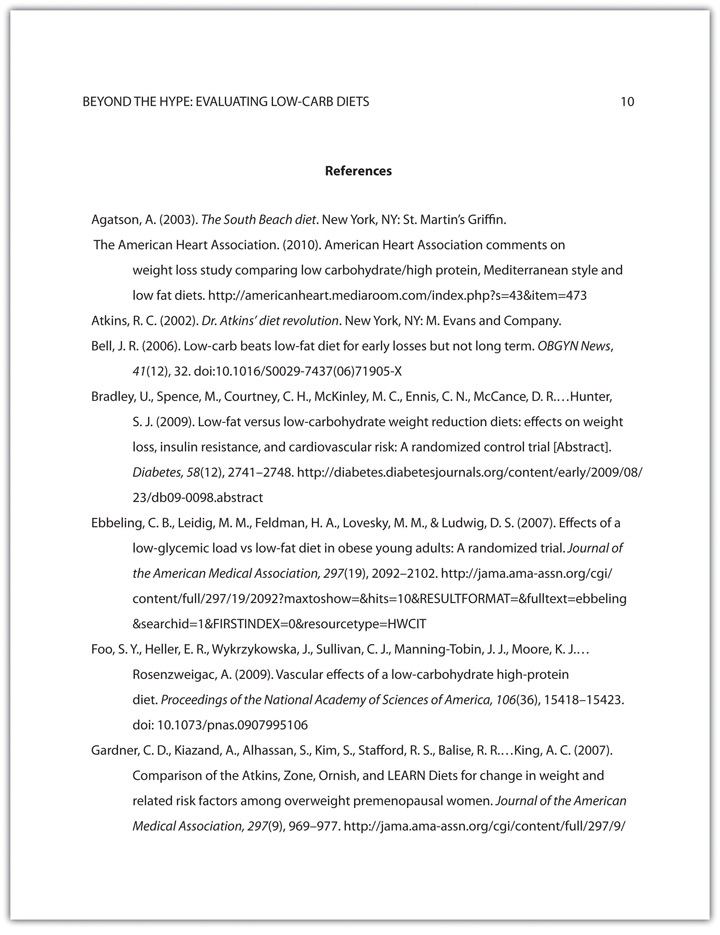
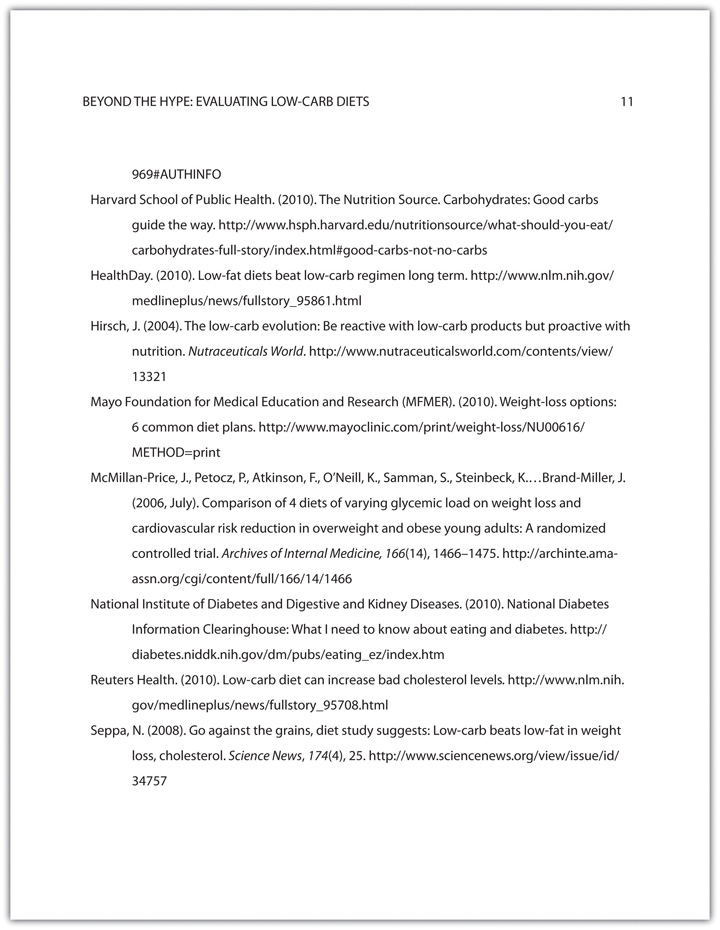
Key Takeaways
- Organization in a research paper means that the argument proceeds logically from the introduction to the body to the conclusion. It flows logically from one point to the next. When revising a research paper, evaluate the organization of the paper as a whole and the organization of individual paragraphs.
- In a cohesive research paper, the elements of the paper work together smoothly and naturally. When revising a research paper, evaluate its cohesion. In particular, check that information from research is smoothly integrated with your ideas.
- An effective research paper uses a style and tone that are appropriately academic and serious. When revising a research paper, check that the style and tone are consistent throughout.
- Editing a research paper involves checking for errors in grammar, mechanics, punctuation, usage, spelling, citations, and formatting.
12.3 Writing a Research Paper: End-of-Chapter Exercises
Exercises
- In this chapter, you learned strategies for generating and narrowing a topic for a research paper. Brainstorm to create a list of five general topics of personal or professional interest to you that you would like to research. Then use freewriting and preliminary research to narrow three of these topics to manageable size for a five- to seven-page research paper. Save your list of topics in a print or electronic file and add to it periodically as you identify additional areas of interest. Use your topic list as a starting point the next time a research paper is assigned.
-
Working with one of the topics you just identified, use the research skills you learned in this chapter to locate three to five potentially useful print or electronic sources of information about the topic. Create a list that includes the following:
- One subject-specific periodicals database likely to include relevant articles on your topic
- Two articles about your topic written for an educated general audience
- At least one article about your topic written for an audience with specialized knowledge
-
In real-life and work-related contexts, people consult a wide range of different information sources every day, without always making conscious judgments about whether the source is reliable and why. Identify one media source of information you use at least once a week—for instance, a website you visit regularly, or a newspaper or magazine to which you subscribe. Write two paragraphs explaining the following:
- What topics you learn about by reading or viewing this source
- Whether you consider this source reliable and why
In addressing the latter point, be sure to consider details that help you evaluate the source’s credibility and reputability, as well as the presence or absence of bias.
-
Different professional communities develop their own standards about the writing style people in that community use when creating documents to share with others. In some cases, these standards may apply to a very broad group of professionals—for example, researchers in many different social sciences use APA style in academic writing. MLA style is commonly used in the humanities, including English classes. In other cases, style guidelines are specific to a particular company or organization. Find a document, such as a newsletter or brochure, that was produced by an organization to which you belong. (Make sure it is a document you have permission to share.) Review the document and answer the following questions:
- What are the purpose, intended audience, and message of this document?
- How does the writing style function to fulfill the purpose, appeal to a particular audience, and convey a message? Consider elements of style, such as word choice, the use of active or passive voice, sentence length, and sentence structure. If your document includes graphics, consider their effectiveness as well.
- Are there any places where the style is inconsistent?
- Is the writing style of this document effective for achieving the document’s purpose? Why or why not? If it is not effective, explain why.




